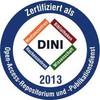PDF, English
 Restricted access: Repository staff only until 27 August 2026. Restricted access: Repository staff only until 27 August 2026.
Login+Download (31MB) | Terms of use |
Abstract
This thesis bridges virology and artificial intelligence (AI)-driven structural biology, focusing on the Lassa virus (LASV), which is a highly pathogenetic virus and still lacks vaccines and treatments. Central to the LASV infection cycle is the viral L protein that drives the transcription and the replication of the viral RNA genome. To identify human interactors with the L protein, conventional multi-omics approaches inducing affinity purification mass spectrometry (AP-MS) and genetic knockout screens were deployed. However, verifying all the identified candidates would be time-consuming and costly. In this work I therefore deployed the latest breakthrough in structural modelling allowing to further prioritise potential human interactors and characterise their interaction mechanisms.
With the rapid developments of AI technologies and AlphaFold’s winning of the Nobel Prize of Chemistry, AI will continue reshaping the computational structural modelling and other areas of bioscience research. The second half of the thesis contains my work in applying AlphaFold’s modelling in identifying novel human interactor proteins with the L protein as well as providing structural predictions of possible interaction mechanisms. Alongside the structural modelling research, this thesis also covers my programming work and contribution to the opensource software framework, expanding the utility of AlphaFold. A key contribution is the development of a versatile software pipeline enabling high-throughput AI-driven structural modelling. This thesis then went beyond the scope of LASV research and evaluated AlphaFold’s limitations in predicting viral-host interactions. My benchmarking work highlights enduring challenges in structural modelling of viral-host protein-protein interactions. Finally, this thesis details my efforts to improve AlphaFold’s modelling of viral-host protein-protein interactions, providing insights and foundations for further developments.
| Document type: | Dissertation |
|---|---|
| Supervisor: | Kosinski, Dr. Jan |
| Place of Publication: | Heidelberg |
| Date of thesis defense: | 27 August 2025 |
| Date Deposited: | 02 Sep 2025 07:20 |
| Date: | 2026 |
| Faculties / Institutes: | The Faculty of Bio Sciences > Dean's Office of the Faculty of Bio Sciences |
| DDC-classification: | 570 Life sciences |
| Controlled Keywords: | virology, computational biology, bioinformatics |









